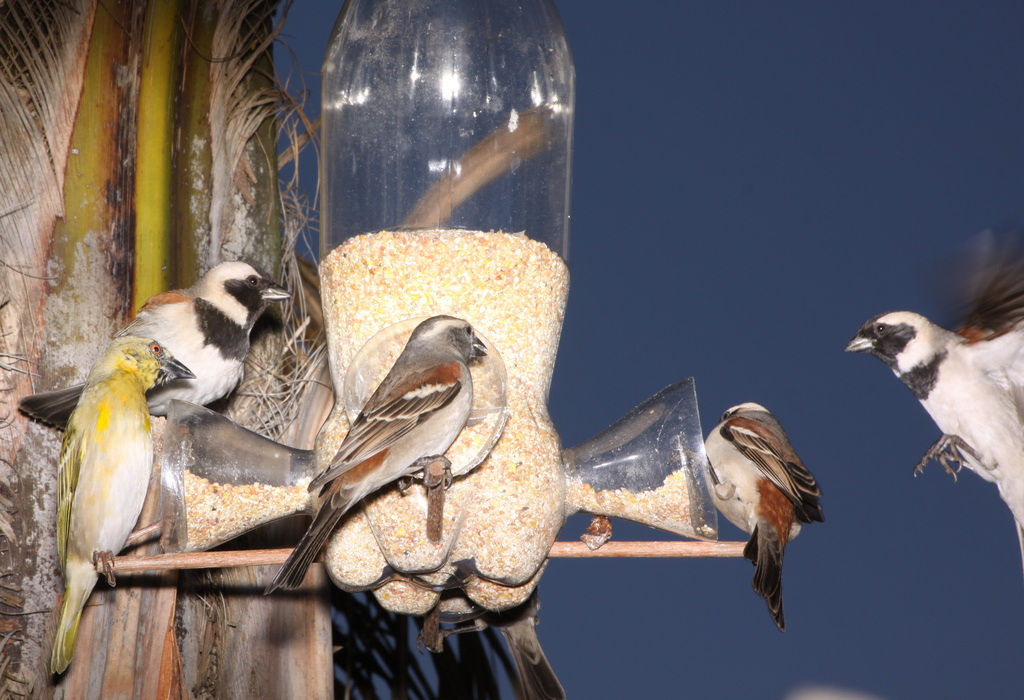For Groovy Robinson in The Year the Swallows Came Early, the best time for birdwatching was in March. But in many parts of the world, winter is a great time for birding!

If you want to be an amateur ornithologist (even for a day), you’ll probably want a bird feeder, a pencil and notebook, and a sharp pair of eyes.
Don’t have a birdfeeder? Not a problem! All you need to make one is an empty plastic bottle, a pair of sharp scissors, and a few dowels, chopsticks, or twigs. And don’t forget the birdseed!
1. Wash, dry, and remove the labels from an empty plastic bottle. Cut four dime-size holes about 3 inches from the bottom of the bottle. These will be the holes that the birds feed from. Cut four pea-size holes about 1 inch from the bottom of the bottle. Slide your chopsticks (or twigs or dowels) through the holes. These will serve as perches for the birds. If you want your feeder to be extra fancy, you can cut off the tops of other bottles and attach them to the feeding holes as shown in the picture above.
2. Fill your birdfeeder with birdseed. A standard mixture will usually work, but black-oil sunflower seed is the best attractant in many areas. (Click here for more information on what birdseed to use.)
3. Find a place to hang your feeder. Look for a tree or overhang where the feeder will be well off the ground, visible to the birds, and inaccessible to other animals like cats and squirrels.
4. Step back and observe! Count the number of birds you observe each day and graph the results. (Math!) See if you can identify the different species of birds using an online field guide or these posters. (Science!) Sketch the birds you see most often (Art!) or write a story about them. (Language Arts!) Listen for the bird calls and see if you can identify the birds by sound as well as sight. Keep a field notebook and record what types of seeds work best and what times of day birds come. The possibilities are endless!
Most importantly, get outside and appreciate those birds!
Additional Resources:
Fun birding games and activities from the National Audubon Society
Record your results on Cornell’s free birding calendar
Sign up to get a Project FeederWatch Research Kit and join Cornell’s team for $15 (or download their free guide)
